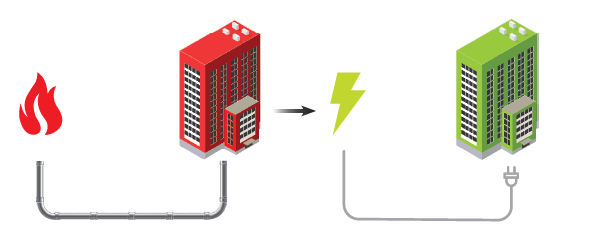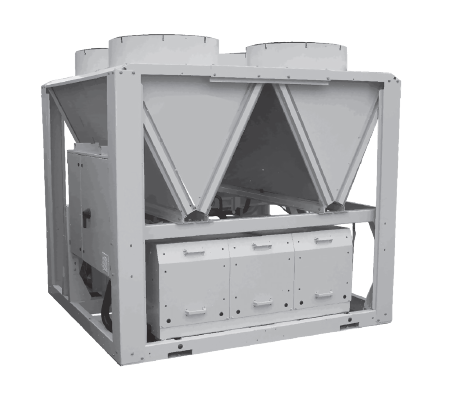Building Electrification
IS NO LONGER A THEORY
Buildings are the largest energy-consuming sector of the U.S. economy, responsible for 40% of the nation’s total energy consumption. Commercial buildings generate 16% of all U.S. CO2 emissions (826 million metric tons)¹, equivalent to nearly 92 billion gallons of gasoline consumed every year². The time to decarbonize our nation’s building sector is here. Influential factors, such as greater awareness of climate change, certification programs like the International Living Future Institute (ILFI), and both local and federal legislation passing stringent energy codes and building performance standards¹, are driving this narrative at an accelerated pace.
Energy efficiency continues to be the most cost-effective solution to reduce building emissions; however, this alone will not be enough in making largescale gains in building decarbonization. As the nation’s electric grid adopts more renewables over time, the path toward true decarbonization is through Building Electrification.

INFLUENTIAL CODES, POLICIES & ORDINANCES
2018 Seattle Energy Code
2021 Washington State Energy Code
Washington State’s Clean Buildings Performance Standards (CBPS)
City of Seattle’s Building Emissions Performance Standard (BEPS)
2019 Washington State Clean Electricity Bill
2020 Vermont Commercial Building Energy Standards (CBES)
NYS 2019 Climate Act
HEAT PUMP TECHNOLOGIES
Building electrification starts with the conversion of systems that have historically utilized fossil fuels – space heating and domestic water heating – to their electrified counterparts: Heat Pumps. Although heat pumps have been in use for decades, advancements in technology and system applications are easing the transition of heat pump adoption within the existing building sector.
With that said, there are many considerations that must be evaluated to ensure a heat pump conversion is feasible, including: electrical service capacity, indoor and/or outdoor space availability, refrigerant global warming potential (GWP) and future reporting requirements, maintainability vs. in-house technical skills, system replacement costs, and the potential of increased operating costs due to elevated electrical demand and differences in fuel source pricing.

BUILDING PERFORMANCE
Electrification of buildings using heat pump technologies will not only reduce GHG emissions, but also significantly improve building energy performance (e.g., EUI) resulting in a higher compliance outlook against future building performance standards and energy codes.
Electrification via Heat Pumps =
PERFORMANCE
+
DECARBONIZATION
______
¹ U.S. Department of Energy
² EPA Greenhouse Gas Equivalency Calculator